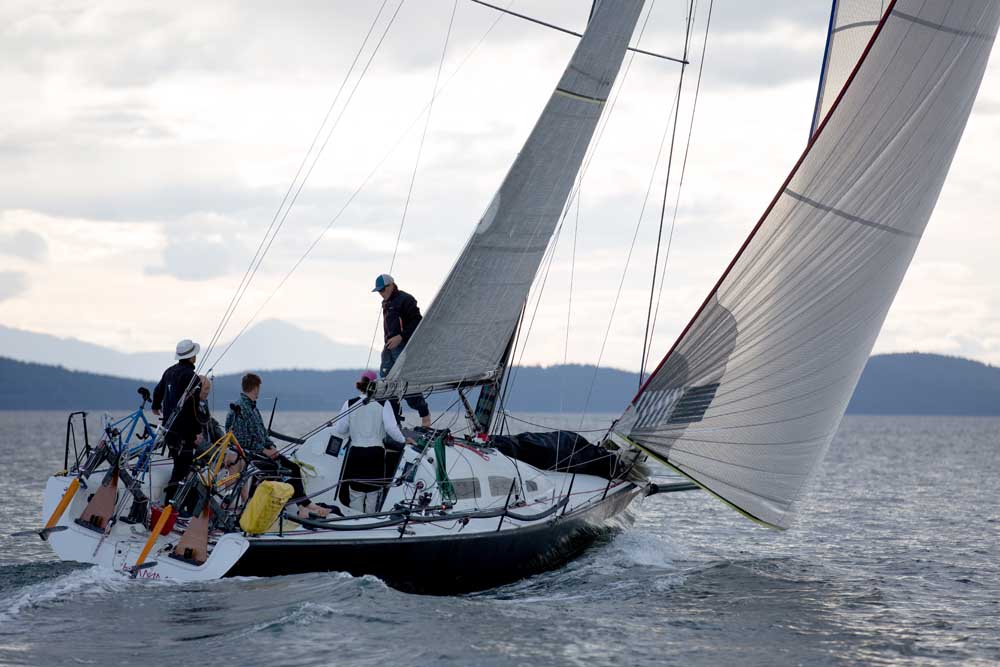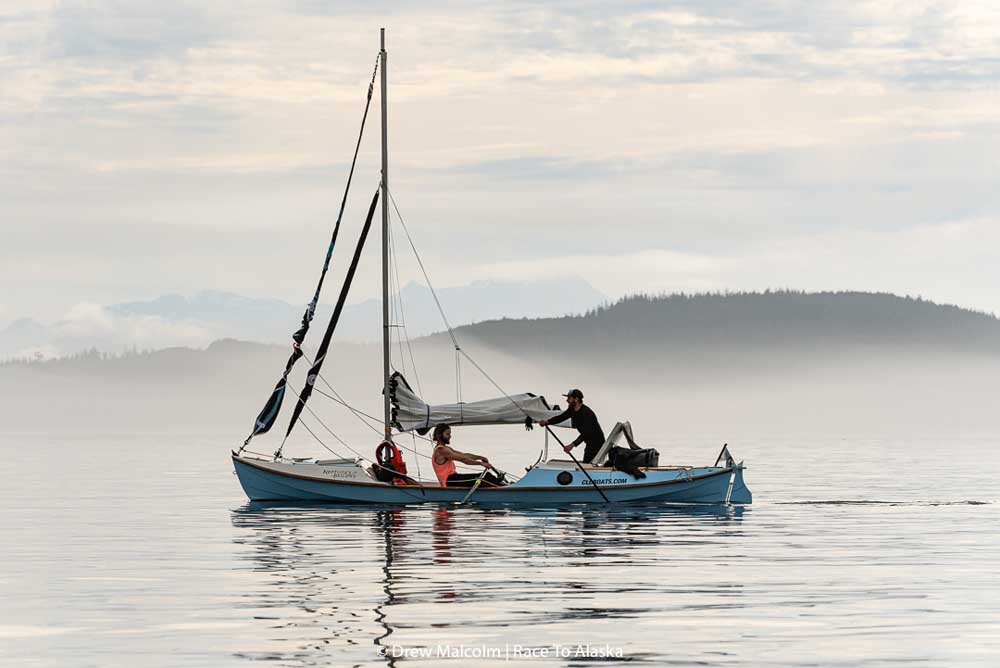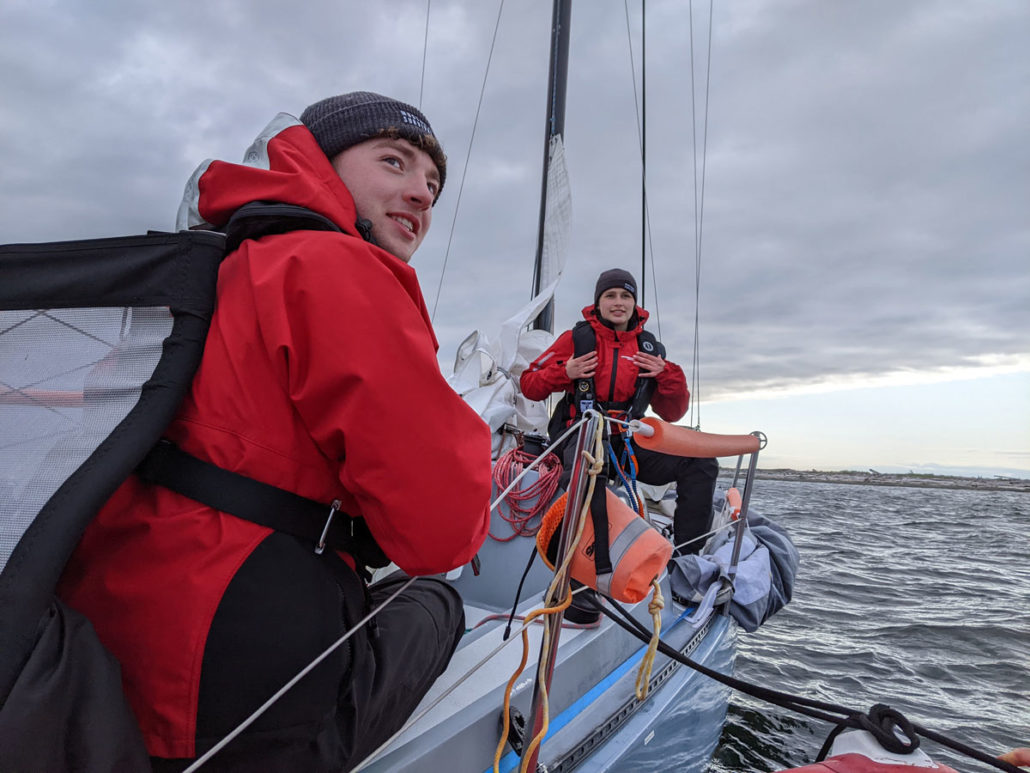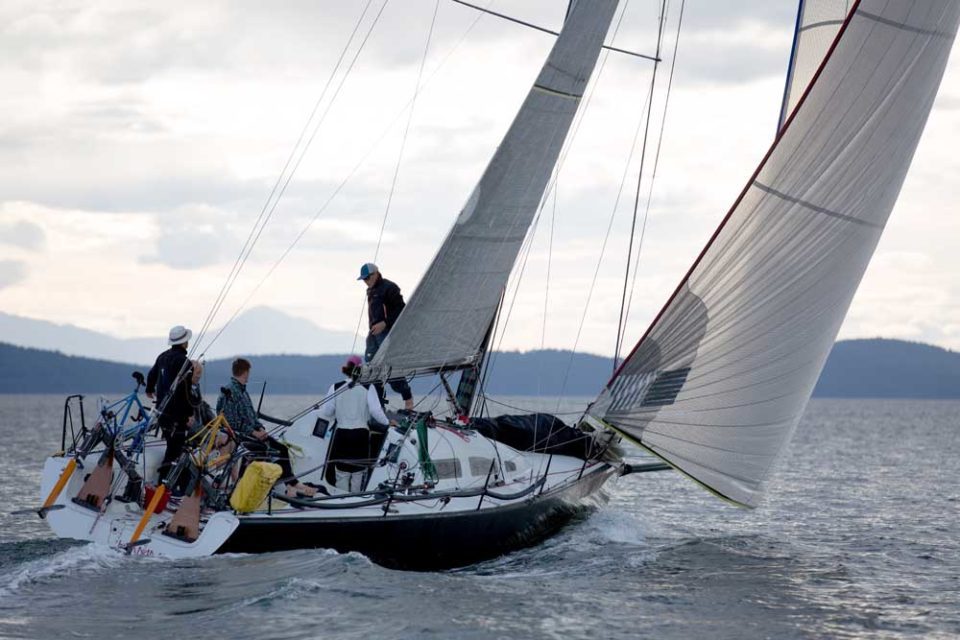“What if we nail 10 grand to a tree in Alaska and say, ‘Come and get it’?”
The idea came to him in the beer tent. Jake Beattie told friends at the Port Townsend Wooden Boat Festival back in 2013. Beattie, the executive director of the Northwest Maritime Center, was fed up with high-dollar, high-tech yacht races. He was looking for a simpler challenge, something pure that anyone with a wild hair and plenty of determination could pull off.
A 750-mile dash up the Inside Passage from Puget Sound, near Seattle, to Ketchikan Alaska seemed to fit the bill. Simplicity was key, with only two rules to speak of: No support, and no motors.
It was an inspired idea; the only question is who it would inspire. As Beattie told Haika magazine writer Aldyn Chwelos, “Every wing nut with a bad idea was going to show up with something that mostly floated.”
And show up they did. The race, now in its sixth edition, has attracted everything from sleek racing sailboats with bicycles bolted to their sterns, to rowboats, kayaks, and standup paddleboards. Last week, after a two-year pandemic hiatus, the fleet set out again. The leaders will likely get to Ketchikan before we get around to posting this story. Others won’t arrive for weeks. Nobody really knows for sure. Really, here’s the Sunday update from the media team:
“Before we get to the daily dose of R2AK’s blathering fever dream, we need to set the record straight: if you don’t know, we probably don’t either.
“To be clear: we are hustling. Up and down R2AK’s elongating geography, we’re hustling via boat, car, plane, and internet to connect with the ever shrinking field of competitors to find out just what the hell is going on. On a good day we can scratch the surface, but rest assured we’re not sitting on a pile of facts that we dole out like candy if you race fans behave.”
 Team Angry Beaver reaching in a fine breeze with their their twin pedal drives stowed. “We still cringe a little at the name.” Photo: R2AK/Taylor Bayly
Team Angry Beaver reaching in a fine breeze with their their twin pedal drives stowed. “We still cringe a little at the name.” Photo: R2AK/Taylor Bayly
To ensure competitors had sufficient experience to survive the passage, organizers convened a secret cabal of “Darwin’s bouncers.” Those who convince the committee they’re up to the challenge still have to pass a real-life test–a 40-mile preamble from Port Townsend to Victoria, British Columbia dubbed “The Proving Ground.” Those who finish in less than 36 hours earn a place in the main event.
Citing conditions of “seasick to dangerous” this year, organizers graciously granted teams an extra 24 hours. Even so, three boats capsized on the way to Victoria and a fourth was dismasted. The U.S. Coast Guard hoisted two competitors into a helicopter and picked up a third with a patrol boat. Good Samaritans rescued a fourth racer.
Thirty-four teams reached Victoria in seaworthy condition before the deadline. The boats are mostly a mix of small trimarans, catamarans and monohull sailboats, together with two kayaks and six rowboats. Team Rite of Passage is composed entirely of teenagers “who still count their age in numbers and halfs.” Nine people are attempting the race solo. Some made their own boats.

Team Wee Free Men making way any way they can. Photo: R2AK/Drew Malcolm
They started the 710-mile journey to Ketchikan at high noon Thursday, sprinting from the seawall to their boats in a LeMans-style start. The boats were not permitted to sail inside of Victoria harbor, so they got underway to the splash of paddles and oars, or the churn of makeshift pedal drives. The R2AK media team had the call:
“The Victoria start is the clumsiest version of hilarious chaotic that the sailing world has ever seen. Boats not meant to do anything other than talk about when and where to Code Zero go pedaling through the provincial capital’s seaplane landing strip while rowboats horizon the sailing fleet’s awkward sweaty progress. This year, most years if we’re being honest, when the fleet reached the point where the actual Queen ordains that it’s legal to hoist their sails, they did so just to learn that it was flat ass calm—for hours, in both directions. Keep pedaling.”
This year organizers introduced a plot twist. For the first time competitors had the option of going “outside,” via the open ocean west of Vancouver Island. “We decided that the thing that we could do to freshen the riddle of the Race to Alaska was to remove one of the rules – one of the few rules – which is that you have to go through Seymour Narrows,” Beattie told Oregon Public Broadcasting. One mandatory mid-race checkpoint remains at Bella Bella, British Columbia.

The young folks on Team Rite of Passage count their ages in numbers and halfs. Photo: R2AK
The Narrows are no joke, with currents of up to 18 miles per hour ripping through a passage less than half a mile wide. Still, all but three teams elected to try their luck with the devil they know (or had heard endless stories about), sticking to the inside rather than rolling the dice with the North Pacific.
The problem with the inside route turns out to be the preponderance of drifting logs east of Vancouver Island. Three boats struck wood on the first night out of Victoria and were forced to withdraw—an especially tough break for the veterans on Team Mololo who were on Team Pear Shaped Racing when they hit a log in 2019. The strike cost them two hours—the difference between 10 grand and steak knives. That’s the other thing you have to know about the Race to Alaska: Second place gets a set of steak knives. Also, they don’t nail the $10,000 to a tree. They stick it to a chunk of dead firewood.
As we go to press, Team Pure & Wild looks like they have a lock on the money, barring mishap or logs-in-the-night. The battle for the knives was heated though, as five teams short-tacked north through the Narrows and battled northward. Seymour was in a mood.
“The much-hyped, 30-foot whirlpools in R2AK’s literature were doubled today—no joke, whirlpools sixty feet across opened up hodgepodge and from nowhere as the current grew,” the media team reported. In a report from the Narrows, Race Marshall Jesse Wiegel said some of the larger whirlpools were “four or five feet vertical drop” below the ambient water level. He did not say why his glasses were patched with Scotch tape. We don’t have the answers either, but the R2AK daily updates are a great read.
Read more :
- Positive the Tropics are Nice however Alaska is a Actual Surf Journey
- Behind the Scenes of a Distant Alaska Volcanic Journey to Aniakchak
- Best things to do in Alaska Earlier than Your UnCruise
- Uncruise Alaska – The Final Alaskan Cruise By way of Glacier Nation
- Alaskan Raft Journey Teaches Grownup Rookie the Joys of Leaping Into the New
- Meet the Twin Brothers Who Paddleboarded From Alaska to Mexico—By Hand
- Utqiagvik, Alaska, gained’t see the solar for 65 days
- Top Three Ways to Participate in National Trails Day 2022!
- How Much Will a Favored Place’s Name Change Change?
- Volunteer Vacations Myths 05/2022
- Travel news 04/2022 – National Volunteer Week 2022


1 comment
My programmer is trying to persuade me to move to .net from PHP.I have always disliked the idea because of the costs.But he’s tryiong none the less. I’ve been using Movable-type on a number of websites for about ayear and am nervous about switching to another platform.I have heard very good things about blogengine.net.Is there a way I can import all my wordpress content into it?Any kind of help would be really appreciated!